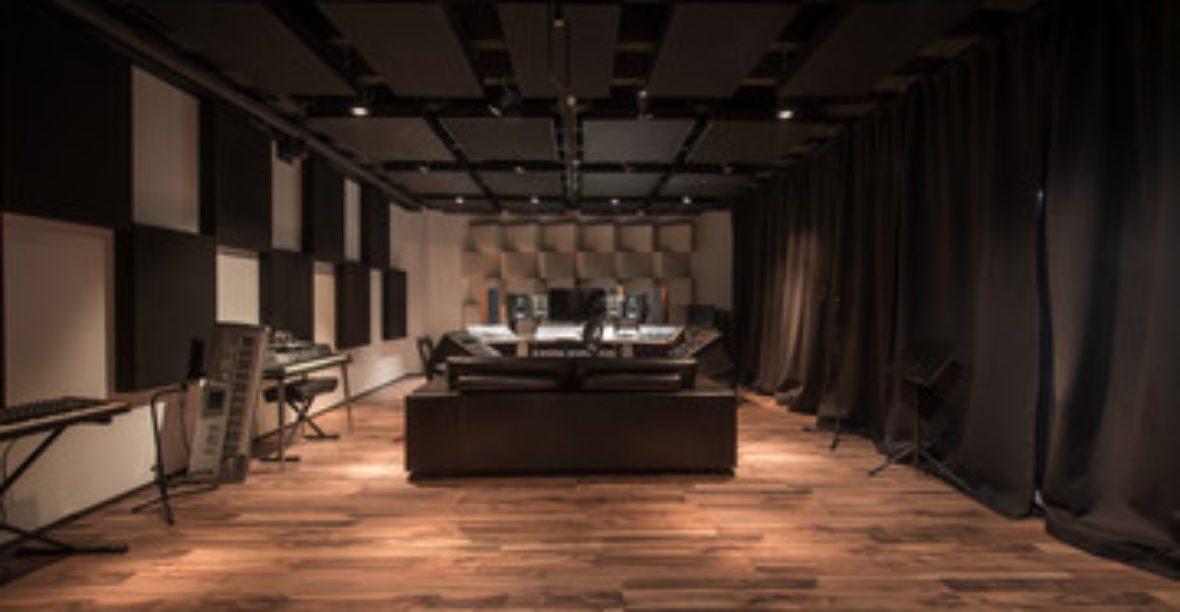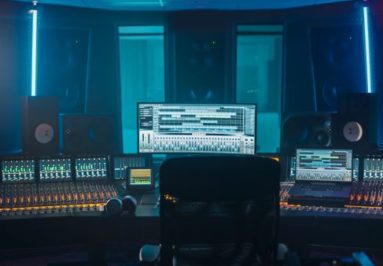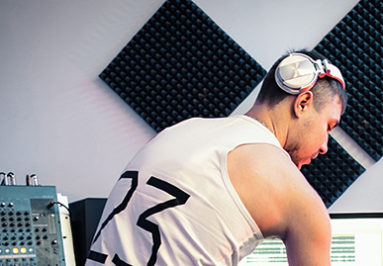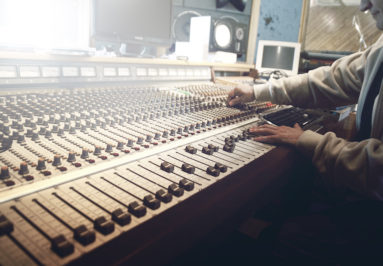When you build a music studio, the main focus is on quality of the end product. Whether that’s creating a venue that’s best for listeners to enjoy music, or a smaller recording studio designed to record high-quality soundtracks, the interior of the space cannot be compromised. However, with the focus on high-end equipment and acoustic panel treatments, it’s easy to forget the criticality of properly soundproofing the music studio!
Music studios should have an STC of at least 55-60 on all surrounding walls. This may be even higher depending on the dB output of the speakers inside, and the proximity to other sensitive locations, such as bedrooms, neighbors, etc. Achieving these high STC values can be really challenging, especially if the walls are single-studs or wood-stud based. See our tips and tricks below to soundproof your music studio.
Music Studio Soundproofing
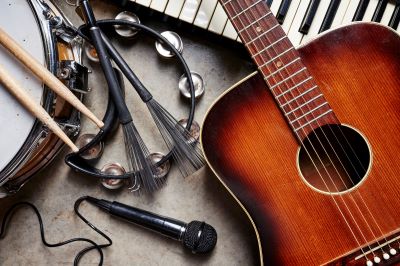
If you’re considering building a studio, and your target wall STC rating is 55-60, your walls need to be soundproofed during construction. It’s much more difficult and expensive to improve the STC of an existing wall than it is just to build the wall with soundproofing in the first place.
When building a music studio with wood studs, it can be hard to exceed STC 50 without either the use of resilient channel or a soundproofing membrane such as Wall Blokker. If the wall assembly is a single-stud assembly, you’ll require both products to reach an STC 50. However, the ideal wood stud wall assembly is a staggered-stud, using Wall Blokker directly on the stud and just one layer of drywall on either side.
If your studio construction uses metal studs, you don’t have to worry as much about the cost of soundproofing the walls. You can use Wall Blokker Lite on a metal stud assembly, which is a 0.6 lb/sf mass loaded vinyl. It’s a fraction of the cost of Wall Blokker and achieves similar results on metal studs on the same wall assembly.
Whichever option you decide on, just keep in mind that wall soundproofing should be done during construction, since it’s much easier and cost-effective, than doing it after the fact.
Reduce Music Studio Noise with Speaker Treatment & Drum Placement
Speakers are often the loudest source of noise within a studio or music venue, while drums and percussion instruments are another primary source of noise complaints. Remember to follow the below rule of thumbs to control noise from speakers and drums.
- Do not place speakers on the walls. This allows speaker energy to pass directly through its mounts into the wall structure. Once the sound energy becomes vibrational, it is much more difficult to isolate. If wall-mounting is necessary, resiliently mount all speakers on neoprene pads, to minimize the amount of energy that becomes structure-borne.
- Use more speakers, and do not turn them as loudly. This reduces the number of hot spots in the space – areas where the sound level drops due to lack of proximity to the nearest speaker.
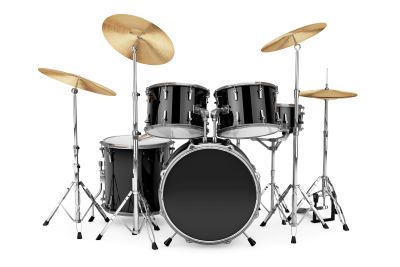
- ALWAYS control speakers at a central location. Don’t allow others to individually control volume levels at the instrument, but rather, set a maximum volume control at a central station and allow substations to turn volume down if needed.
- Drums can sometimes be placed behind “shields” that deflect the direct sound energy, and therefore, limit to 1st and 2nd degree reflections off of the backwall. This reduces excessive energy from drum sets.
Know When to Hire an Acoustic Consultant
Acoustic consultants bring a unique skill set to a studio or venue acoustic design. If your space is larger than 2,000-3,000 square feet, it may be worth hiring a consultant to improve the room acoustics in the space, including analyzing the ITDGs (Initial Time Delay Gaps) and Ray Diagrams of the space. Also, if you are nearby a particularly sensitive venue, consultants can perform field tests to measure the acceptable level at the neighboring locations, or adjacent facilities.
Soundproofing Music Studios
When determining methods for soundproofing a music studio or venue, always ask the material suppliers for independent lab tests that confirm STC performance. Specialty soundproofing materials, such as soundproofing membranes and mass loaded vinyl, may be used for superior soundproofing capability without adding significant additional cost. With the proper installation of MLV, music venues can achieve STC ratings of 60+, and attain low-frequency attenuation critical for music locations.

